Japanese are always one of the worst people in the world.A look at their diet shows why this is how we can benefit from it.
If we want to lose weight, we often start with strict diets, which are not executed in a few days or weeks for all strict rules.In fact, it's so simple: let's look at the worst people - in Japan.
There they treat food with respect and appreciate it.
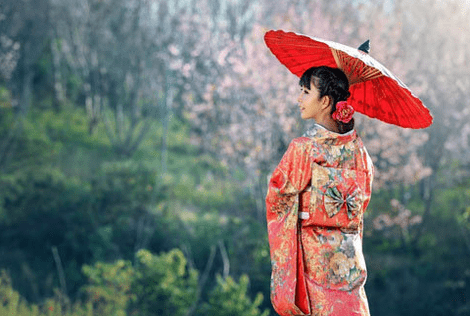
Japanese diet
Travel to Japan.The choice of products
A lotsquirrel: The main ingredients of the Japanese diet are fish, rice and vegetables.As well as soybeans and fruits.
After a more in -depth examination, it's like
- rich in protein,
- low fat
- And the gluten -free diet.
- FishContains a lot of useful omega-3 fatty acids.
- VegetablesThey contain the necessary vitamins and fill the stomach well.
- Do not be afraid of carbohydrates: at first glance, it seems that with the phobia of omnipresent carbohydrates, an incredible amount of white rice is consumed in Japan.Obviously, this is not very harmful to the FLAW FLAWE.RiceIt does not contain gluten and contains little fat.
- Soupand fermented dairy products.That they barely eat in Japan isdairy products.
- AlthoughcerealsSometimes they are used, for example, in the form of pasta, they are not the main food product.
- MeatThey eat much less than fish.
- But the Japanese loveEnzymé productsLike Miso or Kimchi.They contain useful probiotics for the intestines.This, in turn, plays an important role in weight loss.And another thing we can adopt Japanese: they eat a lot of soup even for breakfast.
Travel to Japan.Cooking methods
In Japan, food is mainly steamed, stew or toasted.All these types of preparation are carried out almost without fat.
Of course, there are also fried foods, for example, a popular tempo, but it is then used as an accompaniment only in small quantities.In Japan, the presentation and design of the dish are also important.Asian products are useful, tasty and contribute to weight loss.
In Japanese, eating consciously
In Japan, food is considered an independent action on which you need to focus.Food should be consumed slowly and consciously and enjoy it.Therefore, traditionally, it is not eaten "by the way" or "go".In other words, neither during a walk, nor in the metro, nor during the work, nor by watching a television.Of course, this is not prohibited, but, in fact, a diet, especially when losing weight, should be made consciously.With this food absorption method, a feeling of satiety is felt.Since working days and school days in Japan can be very long, it also means that there are longer breaks for food.AlsoportionsLess in Japan.You will not see a plate overloaded with food.
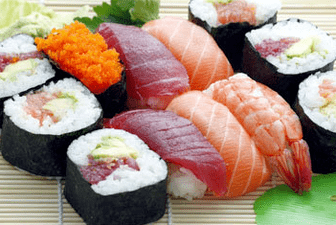
The weight comes with fast food
Slow Food (slow food)In Japan as a trend.If you imitate this, you can lose weight deliberately, not hungry.However, it should be noted that in Japan, more and more west of new trends appears: fast food, for example.Previous habits of food disappear ...
This has consequences: the Japanese also recover when they say goodbye to their traditional food!Nevertheless, the country is also fighting fairly hard with this, Japan in 2009 has taken decisive measures against the causes of overweight.Medical tests are regularly carried out in all municipalities and large companies.Companies should pay more for medical insurance if their employees are overweight or high blood pressure, high blood lipids or increased blood sugar.Given these measures, many Japanese prefer to return to Miso-Upa with fish instead of toast in the morning.
How long does the Japanese diet last?
Possible time and weight loss may vary.The Japanese diet should be observed at least four weeks.This time is sufficient to stimulate the combustion of fats.There are people who have lost3has8A kilogram in four weeks with a diet.The result can be even more increased if you start a sports program.
- During diet, many vegetables and fibers are used.The diet provides1200 caloriesper day.
- It is mainly offered rice, fish and vegetables.
- Drinks: Lots of green tea and water.
- Take care of fresh cooking - No finished products.
- Take sports or train for endurance.
- Plan enough time to cook.
Consult a doctor.- Any change in food can cause ills.The reasons are mainly mental in nature and due to low consumption of calories.Consult a doctor if the symptoms are kept.
Advantages of the Japanese diet
Japanese diet- It is a healthy mixed diet.Great attention is paid to fresh products and a balanced composition of dishes.
The disadvantages of the Japanese diet
- Low calories consumption, this can cause a feeling of hunger and discomfort.For overweight people, the total consumption of calories can even be too low.
- Cooking fresh dishes can be tedious in the long term for those who are used to feeding fast food.
- Spontaneous visits to a coffee or restaurants with friends are faced with a choice.
- The diet requires a lot of endurance.
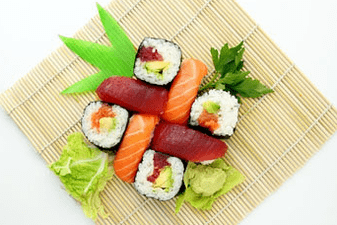
But those who successfully finish the Japanese diet will be rewarded with more excessive weight loss.
If you want to see great successes, make a sports program.Make sure you consume enough protein.Otherwise, you cannot increase muscle mass.In the worst case, you will lose your muscles.Diabolic sports and other large charges should be avoided.
Japanese diet.Menu
All the food should be cool.The dishes are beautifully cooked, you can play with flowers.Food and the pleasure of food (slow absorption of food) are also very important.
Breakfast
- 1 tangerine
- 1 cup of miso.This typical Japanese soup gives a lot of energy, but it is low in fat.By the way, it consists of fish broth, tofu, algae, miso (flavored soy paste) and green onions.The recipe below!
- 1 cup of green tea
Dinner
- 1 plate of earth (raw fish with rice), with soy sauce
- Cup of mushroom noodles
- 1 apple
- A cup of green tea
Dinner
- 1 portion of sashimi (a dish of other fish), soy and basabi sauce (be careful, this dough in whore is very acute)
- 1 cup of whole grains rice
- 1 orange
- A cup of green tea
In addition, exercise is recommended (walking or cycling), as well as the pleasure of small, simple things.
And now on "good old days" - let's take a time trip, in 1975
The Japanese are one of the most healthy people in the world with the greatest long life expectancy, during which they remain harmful due to exemplary nutrition.Currently, Nippon.com has published a study in which he justifies the reasons for the good health of the Japanese with their nutrition.Nutritionists have studied the eating habits of Japanese people for more than half a century.Result:In 1975, Japanese culinary habits were appreciated by the highest assessments.
Why was the Japanese diet of 1975 considered a diet model
For many decades, Japanese culture has been influenced by the Western world, in particular, western power habits propagate in the country and have also brought disease with them such as atherosclerosis and diabetes.The study in which the Japanese diet on mice was tested for several decades - in 2005, 1990, 1975 and 1960.
Result:Mouses had the best state of health with a diet in Japan since 1975. This mouse group had the lowest risk of diabetes and a healthy liver.
Cause:The average Japanese diet contained a large part of vegetables, fruits, algae and seafood during this special year.In addition, in 1975, the diet was predominated by various fermented spice methods and a greater variety of herbs.In addition, the consumption of juice and sweet soft drinks at that time in Japan was not as common as today - the two drinks are considered harmful to health in large quantities.
After the period of 48 weeks, the researchers found that the mice, which were fed by the Japanese diet of 1975, were older and had a better memory than the mice observing the 2005 regime.
But is it possible to transmit these results to people?A study by the Study Committee of the University of Tokhoki in Sendai, Japan, "Ethics of Research Committee" Der Tōhoku Uni, Sendai, proved that the 1975 regime has the same beneficial effect on people.And a group of participants who followed the 1975 regime during the 28 -day period exceeded the indicators of those who followed the 2005 food plan. In the first group, cholesterol was lower, as well as the risk of diabetes.In combination with one hour training three times a week, the 1975 regime also reduced stress and increased endurance in the group of participants aged 20 to 30.In general, nutrition in Japanese style can also help reduce the level of lipids in blood and visceral fat, which is considered harmful to health due to its metabolic activity.
Summary, we can say thatJapan power 1975Compared to modern nutrition in Japan - and typical of the West, eating habits today are more useful in many ways.This healthier lifestyle and nutrition reduces the risk of diabetes, long -term cholesterol, reduces blood lipids and visceral fat, weight loss is a positive side effect.
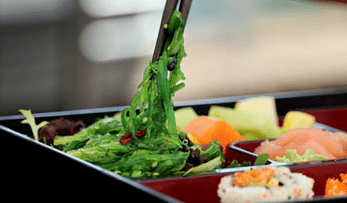
The 1975 diet, as well as regular physical exercises, contribute to weight loss.
- Diversity:The daily menu generally consists of many different small dishes that are served with soup and rice - instead of a large main dish.
- Preparation:The three most popular types of dishes prepared in 1975 were boiled, steamed or raw, also toasted.The heat and roasting of freedom have been used less often.This form of preparation has a consequence of the fact that the most important nutritional values are lost in heat.For example, fatty fish, such as DCO, contains important omega-3 fatty acids.After the frying, the fish contains only a third of the initial fat compared to raw fish, such as Sashim.
- Ingredients:The 1975 diet is particularly rich in soy products, seafood, tubers and green and yellow vegetables (including RNICONS), fruit, algae, mushrooms and green tea.Eggs, dairy products and meat were also consumed in 1975, but only in moderate quantities.
- Spices:Instead of salt and sugar for taste, soy sauce, vinegar and sake, fermented spices and fish broth are used.
Soup miso- This is a Japanese national dish, preparing quickly and very aromatic.The main recipe contains very few ingredients - you can enrich it as you wish.Miso-up is often consumed for breakfast in Japan, but also as a snack or an accompanying dish.With a garnish, the soup becomes the main dish.
As a basis for a soup, you will only need two ingredients:
Mizopasta:This spicy paste consists of soybeans and - depending on the variety - of various cereals, such as rice or barley.The ingredients are salted and fermented in barrels using the Coji So-appeal mold.There are light and dark miso pasta, soft and sharp.Thus, the choice of variety has a great effect on the taste of Miso soup.Mizopasta is considered to be very useful because it contains probiotic lactic bacteria formed during fermentation.Dasha:The Japanese fish broth is prepared from fighting algae layers and dried Bonito flakes (type of mackerel or tuna: "Katsuo-Bushi"-"Katsuo-Busi").If you want to cook vegetarian soup from Miso, you can use dried shiitaka and, perhaps, mushrooms from Maitaka or Eoki instead of Flokes Bonito.
Miso septile: basic recipe
For four small portions of Miso soup, you will need the following ingredients:
- 750 Milliliters of Dasha
- About two or three tablespoons of Miso-Pasta
Use the Miso-Post of your choice: in addition to soy, Shiro-Miso also contains rice and has a rather soft and sweet taste.The darker varieties of Miso, like Genmai or Hatcho Miso, are more spicy.
How to cook the miso soup
-
Heat the Dasha broth - but do not cook.
-
Ignore the Miso-Pass through the sieve and mix well with the broth.First, use only part of the quantity, because the miso of the dough has a very salty taste.Try soup, then add more to Miso pasta, if necessary.
-
Add the ingredients of your choice in poor collection in a few minutes before serving.Serve the finished soup in bowls.By the way, in Japan, the soup is consumed with sticks for food, then the broth is drunk with the cup.
Miso soup recipe: additives and seasonings
For your soup, you can prepare different ingredients.In Japan, great attention is paid to the fact that the ingredients are cut evenly - so that the finished soup is very beautiful.Here are some examples to enrich your soup miso:
- Rice or cooked dough (for example, buckwheat dog noodles)
- Tofu sliced by cubes
- Onions or green onions, cut into thin rings
- Mushrooms, finely chop
- Kohlrabi, finely chop
- Snow sections
- Leaf spinach, Park Choi or Mangold
- Fried vegetables such as broccoli, pepper or carrots
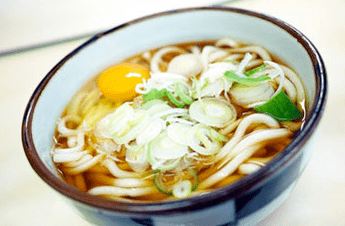
Although Miso soup is very clear in itself, it can be seasoned with several spices.For example:
- soy sauce
- A bit like lime
- Japanese Wostershire Sauce
- A few drops of sesame oil
- A little ginger powder and / or pepper.
- You can also cut fresh ginger and / or pepper into thin slices and leave in a soup.
Advice:For many ingredients, you will have to go to an Asian store, but in the regional markets, you can buy fresh onions, mushrooms, Kohlrabi and Co.
Tofu and other soy products are now also produced in other countries.
Japaneseeat:
- rice, fish (raw and cooked), vegetables, all and algae
- Small portions
- Various foods (up to 30 different per day)
- For breakfast, fish, rice, vegetables
- Fresh seasonal products
Almost don't eat desserts don't eat bread
Mainly drink green tea
Do not Frity in oil, use only a little vegetable oil to fry
They go a lot and go by bicycle
Top three products
Rice / fish (seaweed) / soy (tofu)
Drinking: Green tea
And another Japanese secret
Do you want to become thinner in the size of 12 cm?- If yes, do the following respiratory exercise!
Important!
- Perform daily!
- Perche before breakfast!
- Never hurry!
- The feet put itself at a practical distance.The knees, of course, "look" forward.
- Move the body weight to the rear leg, straighten the front.
- Inhale for 3 seconds.
- Exhale for 7 seconds.Relax the muscles.You tear your hands.
The exercise operates at the start of 3 minutes, then increase the time to 10 minutes.














































































